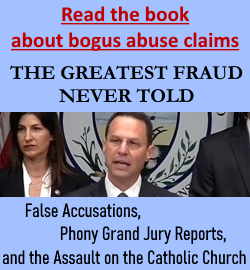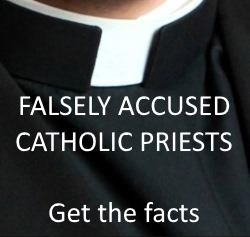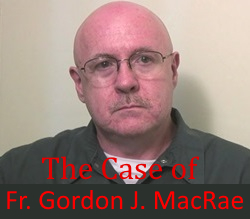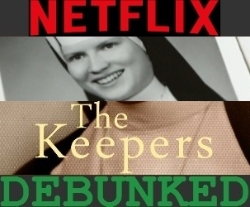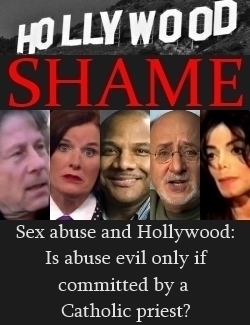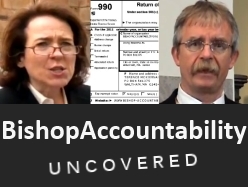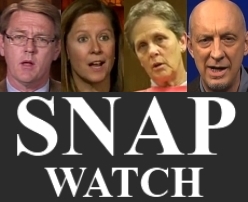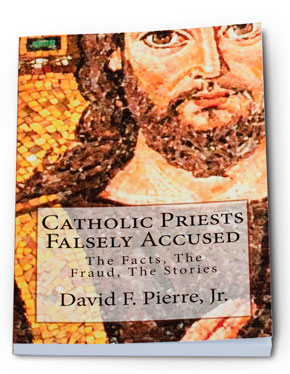An opinion article by author Jason Berry in Sunday's Los Angeles Times (11/11/07) claims that United States Catholic bishops "released data [in 2004] showing that they had identified about 4,400 abusive U.S. priests." The truth? That number refers to the number of priests who had allegations of abuse.
This discrepancy is significant for a number of reasons:
- A priest "with an allegation" does not necessarily represent "an abusive priest." An allegation is not a presumption of guilt. The 2004 John Jay study, to which Berry alludes, defined an allegation as "any accusation that is not implausible" (link). In addition, "The survey results do not include 'unfounded' or withdrawn allegations of abuse, but they do include allegations of abuse that were 'not substantiated' and allegations for which no investigation was conducted" (link, page 22). "More than ten percent of these allegations were characterized as not substantiated. In addition, for approximately twenty percent of the allegations, the priest was deceased or inactive at the time of the receipt of the allegation and typically no investigation was conducted in these circumstances" (link, page 25).
- As we reported in this post over the summer, a number of priests have vehemently denied the allegations against them. (In the post I identified one Los Angeles-area priest whose accuser received a settlement despite the priest's vociferous denial.)
- The Jay study covered allegations spanning over a half a century (1950-2002). Berry's article conveniently omitted this fact. A significant percentage of priests are deceased, and many were tagged with a single accusation after their death. We reported that in the case of the Los Angeles archdiocese, nearly 30% of the accused clergy were deceased at the time of the large settlement in July of this year.
Berry and the Los Angeles Times owe their readers a correction. The study did not "identif[y] about 4,400 abusive U.S. priests." (By the way, the actual number of individuals with allegations who were classified by the study as being an actual priest or bishop (as opposed to a deacon, seminarian, other, or unknown) is 4,078. See Table 3.3.5 here.)
[UPDATE, APRIL 2011: The number of falsely accused priests is much higher than we ever imagined. See this and this.]
Meanwhile, last month, the Associated Press published an explosive three-part series about our nation's schools. (Must-read AP report: Part 1, 2, 3.) It "found 2,570 educators whose teaching credentials were revoked, denied, surrendered or sanctioned from 2001 through 2005 following allegations of sexual misconduct."
"The system fails hundreds of kids each year," the investigation found.
Yet the Los Angeles Times has not printed a single syllable about this stunning report in their newspaper. (I found a cached version of an latimes.com story from a couple of days ago with a reference to the AP study, but it never appeared in the print edition.)
The abuse by priests has been undoubtedly real, angering, and contemptible. But it's clear that it's not the harmful abuse itself that's important to the Los Angeles Times, it's who is committing the abuse. (We've reported before on the negligent coverage of the Church abuse scandal by the Times here, here, here, here, here, and here.)
Berry's article comes across as a weak and desperate attempt to keep the church abuse scandal in the public arena. The end of the article reveals that Berry is directing a documentary film about the scandal "to be released next year." It sure seems that Mr. Berry has a vested interest in keeping this story alive and in the public eye. And the LA Times is all too willing to oblige.
Further analyzing Berry's article:
1. Berry also wrote:
The problem is that [Chicago's Cardinal Francis] George shows little indication of having internalized the lessons of the scandal. He displays a stunning insensitivity to the church's failures …
George did not apologize but defended [a] colleague [Kenneth Martin, accused of past abuse].
In fact, the Cardinal has issued apologies for the way he handled the scandal.
On February 13, 2006, the Chicago Sun-Times reported ("George extends his apology to churchgoers: Parishes get letter," emphasis mine):
In addressing his handling of sex abuse cases, Cardinal Francis George has issued apologies to priests, the media and members of affected parishes.
On Sunday, George extended his apologies to churchgoers throughout the Archdiocese of Chicago.
"I must apologize to all of you for the great embarrassment every Catholic must now feel in the light of media scrutiny of these events," George wrote in a letter he asked to be distributed at Sunday masses.
The two-page letter, addressed to "brothers and sisters in Christ," concluded: "I pray that a failure to act more quickly on my part will not harm the archdiocese itself. You are in my prayers; please keep me in yours. God bless you."
By omitting this, Berry flat-out misleads his readers by going out of his way to deliberately portray the Cardinal only in the most sinister light.
As far as Berry's charge that George "defended" the molester Kenneth Martin, the Chicago Sun-Times reported in March 2003 ("George Didn't Know Details of Guest Priest's Sex Abuse Case"):
Told the details of the Martin abuse case Friday evening, [Cardinal] George said, "That's a little bit sobering…. Those are things I wasn't aware of, nor of the details of the case.
"You trust the conclusions given you. We didn't ask for the details of the case. Perhaps we should have."
That's hardly emblematic of someone "defending" Martin. Again, Berry does not quite give the full story.
2. Berry also wrote of a situation at a school where a priest abused students (emphasis mine):
The archdiocese did take action against Barbara Westrick, the school's principal, who had called the police after she learned of the complaint against the priest [abuser Daniel McCormack]. She was fired in June. Although the archdiocese denies it, it seems likely that her criticisms of the church's response cost her her job.
"It seems likely"? Why? Berry offers no explanation whatsoever. Not cool.
3. Berry also added,
Displaying the callousness that has cursed so many Catholic bishops for so long, [Chicago auxiliary bishop Thomas J.] Paprocki insulted the victims of the scandals, as well as the attorneys and judges in their cases, with these words: "We must use our religious discernment to recognize that the principal force behind these attacks is none other than the devil."
"Insulted the victims of the scandals"? Berry refers to a homily that Bishop Paprocki gave in October. You can read the homily for yourself here (pdf file).
Paprocki's homily addressed the effects of the scandal and lawsuits on the Church:
While the sexual abuse of minors is a sin that must be addressed by the Church and a crime that must be punished by the criminal justice system, I would suggest that the current approach of awarding large monetary damages to victims is not only contrary to the purposes of tort liability theory, but also place an excessive burden on the free exercise of religion for Catholics in the United States. If such purposes seek to punish wrongdoers and deter wrongful conduct, the settlement or award of civil damages is punishing the wrong people, namely, the average parishioner or donor whose financial contributions support the Church but who have no role in the supervision of clergy. Instead of supporting the parishes, religious and charitable works that these donors seek to support through their contributions, these monies are being diverted to pay claimants and their lawyers.
Most of the bishops who were negligent in their supervision of clergy who offended 20, 30, 40 or even 50 years ago are long gone. Monetary damages taken from a not-for-profit entity do not punish the wrongdoers, but only serve to constrain the scope of the entity’s charitable, religious and educational activities.
Berry's perverse inference injures his journalistic credibility. Berry's response is a reflection of one who always seeks to infer the most dismal of motives from church officials. It reveals that his true motivation may not be the pursuit of truth and facts but an ulterior motive.
Not cool, Mr. Berry. Not cool.
